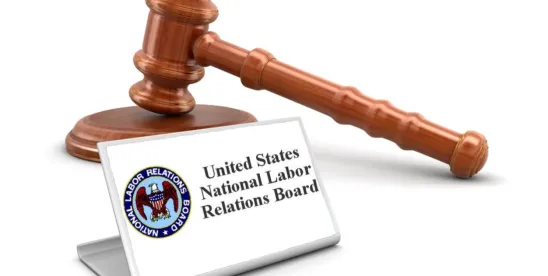In a decision providing significant relief for employers, a federal court in Texas struck down the National Labor Relations Board’s (NLRB) 2023 joint employer rule.[i] Being designated a joint employer by the NLRB can have far-reaching consequences for a business, including potential obligations to negotiate with unions representing workers not directly employed by the business and shared liability for labor law violations committed by another employer. The court’s decision puts on hold the NLRB’s rule which would have expanded employer liability under the National Labor Relations Act (NLRA), particularly for businesses that regularly utilize contractors or franchising models and leaves intact the more predictable and business-friendly joint employer standard the NLRB sought to supplant with its rule.
The NLRB’s 2023 Rule
The NLRB’s 2023 rule defining joint employers represented a dramatic shift in how joint employer status should be determined. The rule expanded the definition to include entities that exercise even indirect control, or merely possess the potential to control essential “terms and conditions of employment,” even if they did not exercise any possible or “reserved” control. This represented a substantial departure from the 2020 standard established by the NLRB when it was made up of a majority of members selected by the previous presidential administration, which required a showing of an employer’s “substantial direct and immediate control” over essential employment terms to be deemed a joint employer. The practical impact of the NLRB’s 2023 joint employer rule would have been to greatly expand the number of businesses deemed to be joint employers for purposes of the NLRA, including franchisees and franchisors and companies that obtain employees through an employee leasing or temporary employment services company.
The Court’s Rationale: Common Law Boundaries
The court’s decision turned on the 2023 rule’s overreach beyond the common-law boundaries that define employer status under the NLRA. Among the factors the court relied upon to find the rule to be “arbitrary and capricious” were that:
- the 2023 rule required an illusory two-step analysis. First, an entity would need to qualify as a common-law employer, and second, the entity would have to possess the authority to codetermine essential terms of employment (even if this authority was not exercised). However, the court found this second step to be meaningless, as under the NLRB’s rule, meeting the first condition would effectively always guarantee meeting the second; and
- the NLRB’s rule disregarded common-law agency principles, which the court found it could not do. The 2023 rule’s inclusion of indirect and even potential control would have swept in virtually any business that contracts for labor, blurring the lines of employer responsibility beyond recognition.
To illustrate its point, the court provided an example of a hypothetical company contracting with a third-party lawn service. Under the 2023 rule, even standard contractual terms regarding the contracting party’s expectations for safe performance of work by the contractor or with respect to project deadlines could have potentially made the contracting business a joint employer with the lawn service company since such contract terms arguably provided the contracting business some measure of control over employee safety or scheduling issues.
The Decision Preserves the 2020 Rule, For Now
For now, the 2020 joint employer test, which requires “immediate and direct control” of employees, remains the standard. The NLRB may appeal this matter to the Fifth Circuit Court of Appeals, potentially leading to reinstatement of the broader 2023 rule. Alternatively, the NLRB could initiate a new rulemaking process, with the outcome falling somewhere between the 2020 and 2023 standards. The battle over defining joint employer liability under the NLRA has been ongoing for several years and is not likely to end with this ruling. Employers therefore should continue to monitor further developments with respect to the NLRB’s joint employer test.
[i] Chamber of Com. of United States v. NLRB, No. 6:23-CV-00553, 2024 WL 1045231 (E.D. Tex. Mar. 8, 2024).




 />i
/>i

